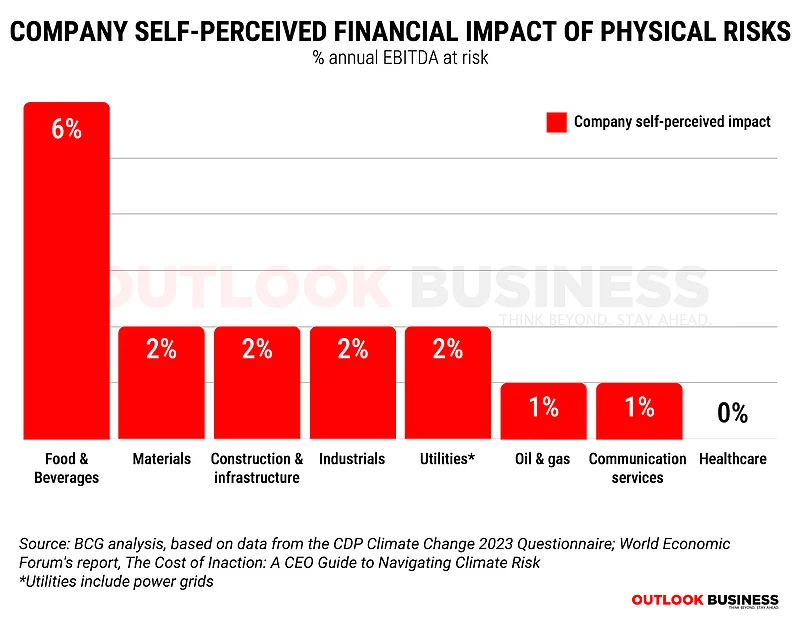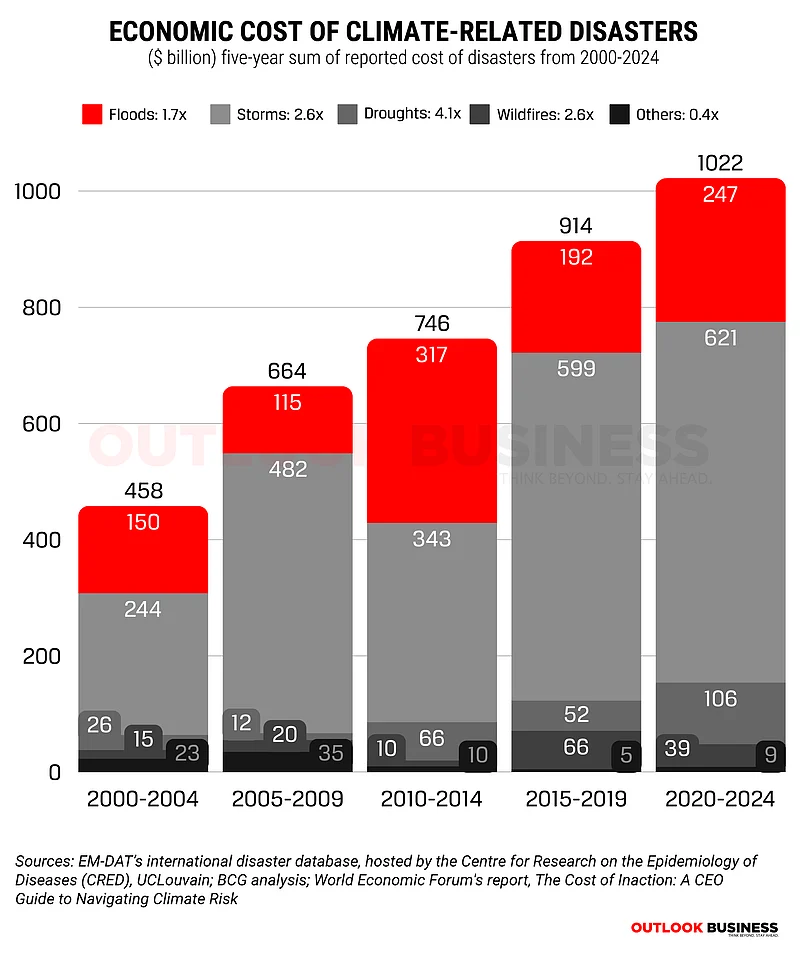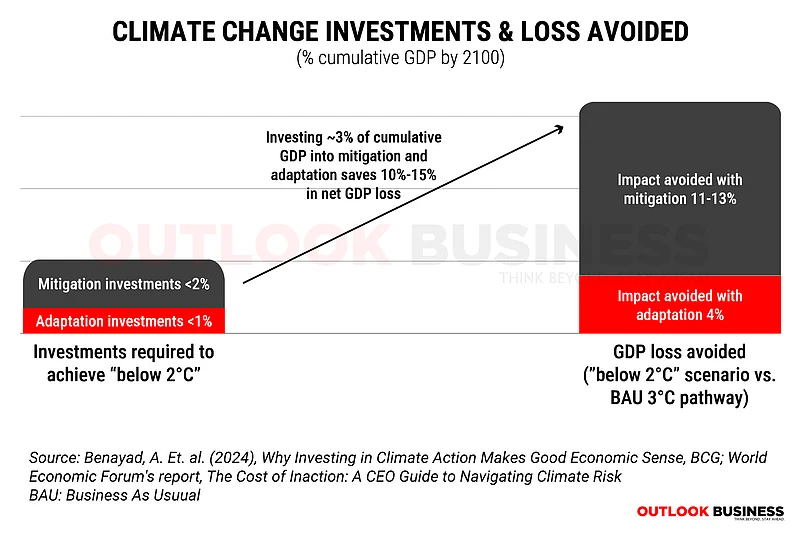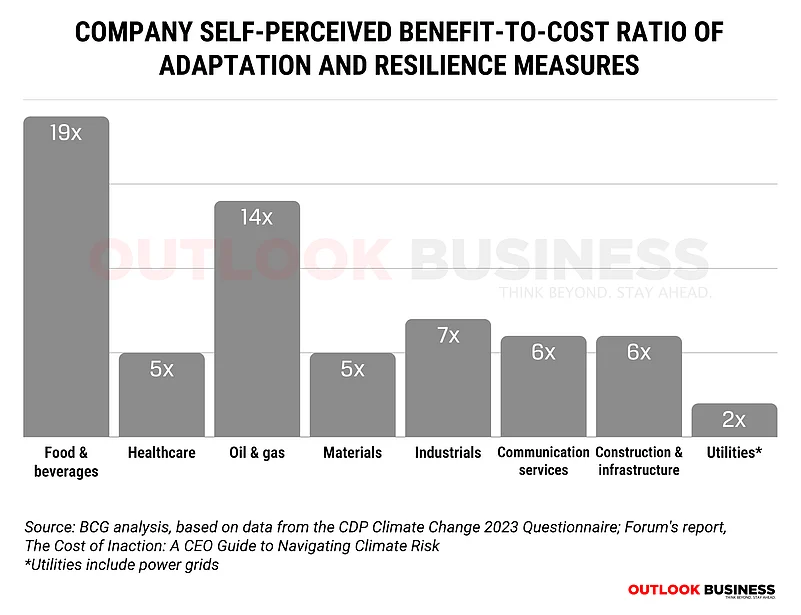Climate change is impacting businesses adversely, and CEOs are increasingly recognising physical risks but are likely underestimating the financial impact of these risks, says the World Economic Forum's 2024 report, The Cost of Inaction: A CEO Guide to Navigating Climate Risk.
From disruptions in supply chains to impacts on employee productivity and societal stability, the risks are far-reaching. But by prioritising investments in climate adaptation and mitigation, CEOs can safeguard their companies from economic losses, access emerging markets and enhance resilience in a rapidly evolving global economy.
The report is based on insights gathered from over 1,000 CEOs from diverse industries worldwide, including sectors most vulnerable to climate risks such as energy, infrastructure, manufacturing and finance.

Climate disasters are driving financial losses: Since 2000, climate-related disasters have caused over $3.6 trillion in damages, with costs doubling over the last two decades.

Inaction could undermine economic growth: Without decisive action, global GDP could decline by as much as 22% by 2100. However, strategic investments in climate mitigation (2-3% of global GDP) could save up to 15%, demonstrating that climate action is a smart economic choice.

CEOs recognise physical risks but likely underestimate their impact: Climate risk data is fragmented and inconsistent, hindering the assessment of its full impact across a company’s value chain and integration into traditional planning. The relatively few that do attempt to quantify climate-related business risk and report their financial exposure generally report lower figures than those indicated by the analysis in this report.
By 2050, businesses in high-risk sectors that fail to prepare for climate disruptions could face 5% to 25% reductions in EBITDA, the report says.

Climate action instead offers competitive advantages: Climate leaders can unlock substantial growth and competitive advantage by tapping into the $14 trillion green technology market by 2030. Companies investing in adaptation measures have reported benefit-to-cost ratios ranging from $2 to $19 (median $10.5) for every dollar spent. These companies not only mitigate risks but also unlock new revenue streams and strengthen their market position.

























